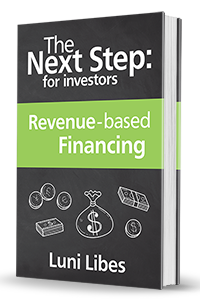A rose by any other name…
Your company needs a name. Your product/service needs a name. For a startup, they should be the same name.
As a startup, you have very limited resources. You need every marketing effort, every bit of networking, every gram of outbound messaging to create awareness of both your company and your product. You simply don’t have the time or money to double your efforts. So don’t. Find one great name, and use it everywhere.
Once your company is established, is earning revenues, and is ready to launch a second product, then you can consider whether you should differentiate the products with unique names or stick with one name. You can differentiate the products by tacking on “Pro” or “Mini” or another differentiating term.
Naming is difficult. For companies, almost anything is possible. Some people like descriptive names, e.g., International Business Machines and General Electric. Others like interesting but non-descriptive words, e.g., Amazon and Apple. Some names are completely made up, based on interesting sounds, e.g., Kodak and Exxon. Some are purposeful misspellings, e.g., Xerox and Google. Some are portmanteaus, melding two other words together, e.g., Accenture and Verizon. Some are snippets from within longer words, e.g., Intel and Cisco.
Whatever name you choose, test it against your core essence. Does it convey those meanings?
And if you are looking for inspiration for names, use those dozens of words that you listed to create your core essence. Try out each of them. Try looking up their synonyms in the thesaurus. Try pulling out interesting sounds. Try putting together portmanteaus.
Once you have a shortlist of names, next comes the disappointing step: looking up which are already taken.
Back in the twentieth century, a name was taken if another company had a trademark. A trademark is registered with the government of a specific state or country, protecting your company name (or tag line) from being used by another company in that state or country.
You can look up trademarks in your national trademark directory. For the U.S., the directory is searchable online at uspto.gov. Similarly, for most U.S. states, you can look up business names via the Secretary of State’s website or whichever department handles incorporations.
Here in the early part of the twenty-first century, trademarks are still important, but not as important as the ability for customers to be able to search for your company online. Determining whether a name is “taken” now has two new components.
First, is the .com domain name available? Even if you are not building a web-based business, you are likely to use a website to communicate with customers, and their browsers and smartphones will default to look for a .com address. If the answer is no, don’t fret. There are a multitude of other top-level domains, and some might work for your business. Perhaps you can use an abbreviation? Or a clever a domain, like about.me.
Second, and more importantly, what results do you see when you google the name? Do competitors appear? Is the first page filled with links to strong brands in other markets? Is there any bad news associated with that word? In short, is this a set of search results you want to be associated with? If so, given what you see, what are the odds that your website will appear on the first page of results?
For example, when I was trying to name my business incubator, one of the names near the top of the list was “hatch.” Search the word “hatch,” and you’ll find websites about maternity clothes, educational software, a U.S. Senator, employment agencies, and chickens. Search “hatch incubator,” and the results are all about products to help you incubate chicken eggs. Given this, I never bothered to look up related domain names. Yes, none of these results were direct competition for what might have been the Hatch Business Incubator, but all of those results were competition for the first page of search results, and all were distractions for customers seeking to find my company.
Further down on my list was “fledge.” When I googled that term, the first page of results were a Wikipedia article on the concept of birds fledging, followed by links to definitions from three dictionaries. Checking Google Trends, I could see that the term is not often searched. The .com was not available, but the .co was. Within a week after my setting up the website, my company’s fledge.co was on the first page of search results, and within a few months, it was the first result when searching “fledge,” beating out Wikipedia.
Before moving forward, I did check the trademarks, as well as the list of companies in Washington State, but it was the near-empty space in Google that made me pick “Fledge” over all the other names on my list.











